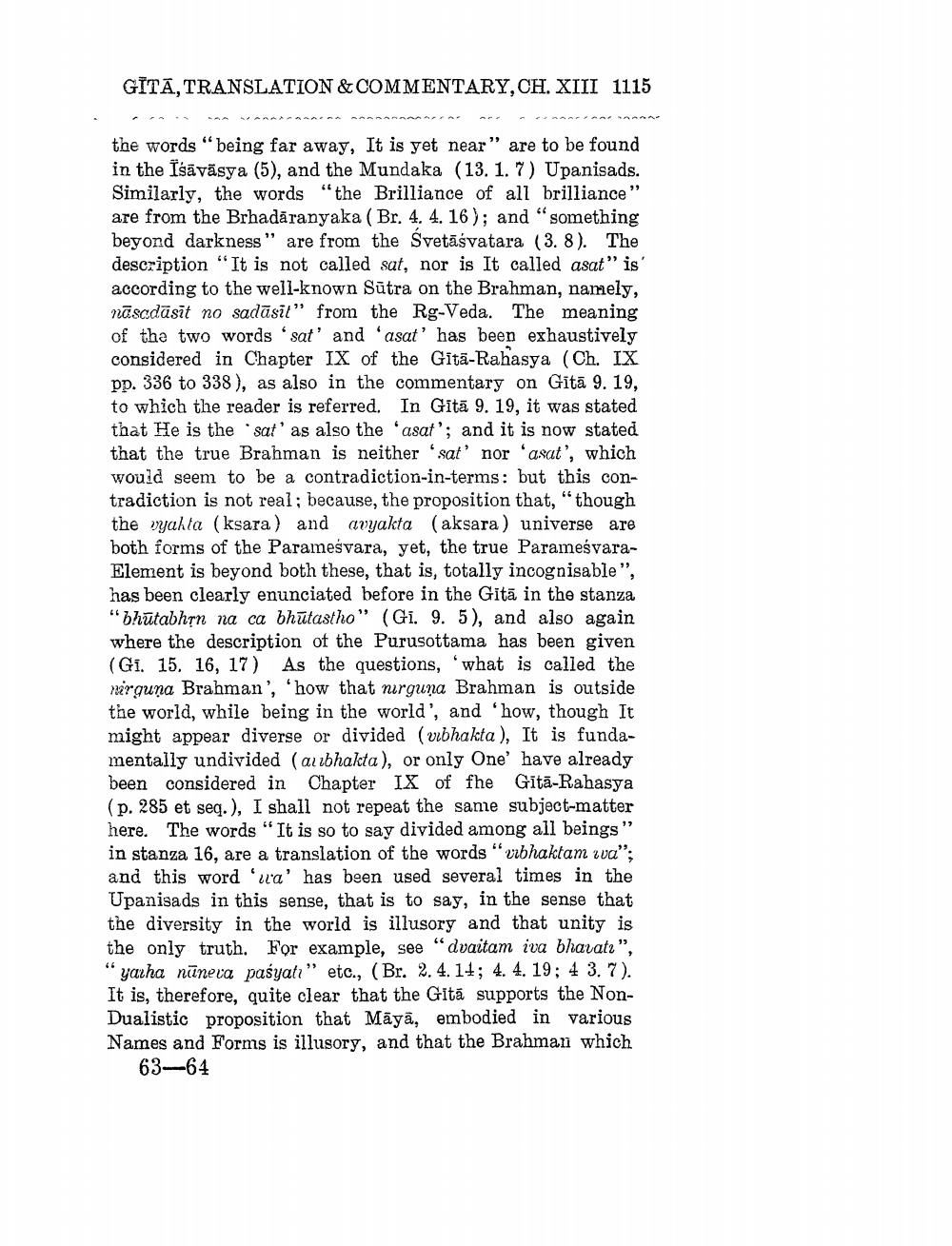________________
GITA, TRANSLATION & COMMENTARY, CH. XIII 1115
the words "being far away, It is yet near" are to be found in the Išāvāsya (5), and the Mundaka (13. 1. 7) Upanisads. Similarly, the words "the Brilliance of all brilliance" are from the Brhadāranyaka (Br. 4. 4.16); and "something beyond darkness" are from the Svetāśvatara (3.8). The description "It is not called sat, nor is It called asat" is according to the well-known Sūtra on the Brahman, namely, nāscdāsīt no sadāsil” from the Rg-Veda. The meaning of the two words 'sat' and 'asat' has been exhaustively considered in Chapter IX of the Gītā-Rahasya (Ch. IX pp. 336 to 338), as also in the commentary on Gītā 9. 19, to which the reader is referred. In Gītā 9. 19, it was stated that He is the 'sat' as also the 'asat'; and it is now stated that the true Brahman is neither 'sat' nor 'asat', which would seem to be a contradiction-in-terms: but this contradiction is not real; because, the proposition that," though the "yahta (ksara) and avyakta (aksara) universe are both forms of the Parameśvara, yet, the true ParameśvaraElement is beyond both these, that is, totally incognisable", has been clearly enunciated before in the Gitā in the stanza "bhūtabhrn na ca bhūtastho" (Gi. 9. 5), and also again where the description of the Purusottama has been given (Gi. 15, 16, 17) As the questions, 'what is called the perguna Brahman', 'how that nirguna Brahman is outside the world, while being in the world', and 'how, though It might appear diverse or divided (vibhakta), It is fundamentally undivided (arbhakta), or only One' have already been considered in Chapter IX of fhe Gītā-Rahasya (p. 285 et seq.), I shall not repeat the same subject-matter here. The words "It is so to say divided among all beings" in stanza 16, are a translation of the words "vrbhaktam iva"; and this word 'ua' has been used several times in the Upanisads in this sense, that is to say, in the sense that the diversity in the world is illusory and that unity is the only truth. For example, see "dvaitam iva bharatz", "yarha nūneva paśyatı" etc., (Br. 2.4.14; 4. 4. 19; 4 3.7). It is, therefore, quite clear that the Gītā supports the NonDualistic proposition that Māyā, embodied in various Names and Forms is illusory, and that the Brahman which
63-64




